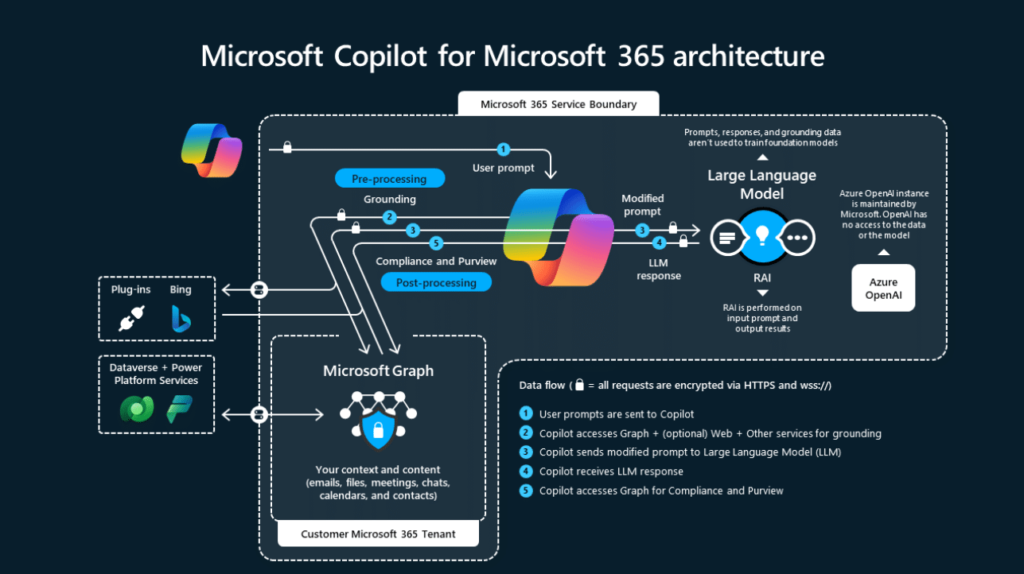Introduction
Microsoft Dynamics 365 isn’t just catching up with the AI revolution—it’s helping lead it. Over the last year, the CRM platform has transformed from a digital rolodex into a hyper‑intelligent assistant that scores leads, understands tone, and even writes follow‑up emails for you.
For developers, CRM admins, and SaaS teams that rely on Dynamics, the changes aren’t cosmetic—they’re foundational.
We’re now in a world where your CRM can detect customer frustration before a support ticket is opened. Where virtual agents can handle onboarding without human help. And where predictive AI makes your sales pipeline smarter than ever.
So what’s actually powering these innovations?
Let’s explore the cutting‑edge trends shaping Microsoft Dynamics CRM development in 2025—from chatbots that think, to sentiment engines that feel.
For more insights? Explore our full library of CRM AI resources on emerging Dynamics trends.
Why Dynamics 365 CRM is at the Forefront of Innovation
Microsoft’s Investment in AI and Copilot
Microsoft isn’t dabbling in AI—it’s going all in. With billions poured into its partnership with Open AI and deep integration across its stack, Dynamics 365 has become a key delivery mechanism for this AI power. Microsoft Copilot, Microsoft’s embedded AI assistant, now ships natively with Dynamics CRM. It can generate email replies, summarize meetings, and even recommend next steps during a deal cycle.
This isn’t AI on the side—it’s AI baked into the workflow.
Market Momentum and Competitive Edge
Enterprises are taking notice. In 2024, Dynamics 365’s CRM user base grew significantly, driven by mid‑market companies looking for more automation without the complexity of Salesforce. The platform’s seamless integration with Office 365, Teams, and Azure services gives it a unique advantage: it’s not just a CRM—it’s part of a larger ecosystem that businesses already live in.
That tight integration is giving it a serious edge in industries like healthcare, manufacturing, and financial services.
Integration with Power Platform and Azure AI
One of Dynamics’ superpowers is how well it plays with Power Platform—especially Power Automate, Power BI, and Copilot Studio. Developers can build low‑code solutions, automate complex processes, and inject intelligence into every part of the customer journey.
On the backend, Azure AI fuels much of the predictive analytics and natural‑language processing, turning raw customer data into real‑time intelligence.
Developers can build low-code solutions, automate complex processes, and inject intelligence into every part of the customer journey—often with help from Power Platform experts.
AI-Powered Lead Scoring & Predictive Insights
How AI Models Forecast Churn and Conversion
Forget gut instinct. Dynamics 365 CRM now uses predictive AI models to determine which leads are most likely to convert—and which customers are at risk of churning. These models analyze past behaviors, email engagement, deal velocity, and more to surface hidden patterns sales teams might miss.
This isn’t just data—it’s foresight.
By automatically prioritizing leads, reps focus their energy on the most promising opportunities, while customer success teams can intervene before relationships fall apart.
Real Examples: Sales Prioritization and Deal Acceleration
Let’s say your rep has 80 open leads. Traditionally, they’d sort by deal size or recent activity. With AI scoring, Dynamics highlights leads matching your ideal customer profile, warming-up signals based on engagement, and flags deals that are stalling.
Suddenly, your team isn’t just selling—they’re orchestrating based on likelihood and timing.
From Reactive to Proactive: The Shift in CRM Thinking
Historically, CRM was a tool for tracking what already happened. Today, it’s about shaping what happens next. This predictive shift is a game‑changer: no more waiting for data reviews at quarter’s end—now insights are delivered in real time, embedded in pipeline views.
Dynamics CRM is transforming from a reporting tool into an active strategist on your team.
Chatbots and Virtual Agents that Actually Work
From Scripts to Smart Assistants: The Evolution
Chatbots used to be glorified FAQ engines—rigid, rule‑based, and easy to frustrate. Not anymore.
Generative AI and natural‑language models empower Dynamics 365 virtual agents to hold multi‑turn conversations, understand intent, and adapt in real time. These bots don’t just respond—they interpret, escalate, and learn.
This is customer service that scales without sacrificing experience.
Copilot Studio & Low‑Code Bot Building
What sets Microsoft’s ecosystem apart is accessibility. Copilot Studio lets teams design, test, and deploy intelligent chatbots via drag‑and‑drop—no coding required.
Need bots that handle appointment scheduling, product returns, or lead qualification? Build them in days, not months.
And they pull context from Dynamics CRM—customer history, preferences, past tickets—for genuinely personalized interactions.
Even better, these Copilot-powered bots plug directly into Dynamics CRM.
Use Cases in Support, Sales, and Onboarding
- Customer Support: Bots handle high‑volume queries like password resets, order tracking, or return policies—freeing agents for more complex issues.
- Sales: Virtual assistants qualify leads, schedule demos, and send follow‑up emails automatically.
- Onboarding: Bots guide new customers or employees through setup steps, policies, and workflows.
The goal isn’t replacing people—it’s removing friction, speeding responses, and enhancing human interactions.
Real-Time Sentiment Analysis & Emotional Intelligence
Why Emotion Detection Matters in CRM
A customer’s tone often matters more than their words. That’s where sentiment analysis comes in.
Dynamics 365 now offers real‑time sentiment tracking during support interactions—live chat, email, or voice. It detects cues like frustration, confusion, or satisfaction and flags them for agents and supervisors. This emotional radar changes how support teams operate—they don’t just react to what’s said—they respond to how it’s said.
That can make all the difference between retaining or losing a customer.
Examples: Service Recovery and Escalation
Imagine a customer sounding increasingly irritated during a support call. Previously, agents might miss the severity. Now, sentiment alerts and live transcripts allow real‑time de‑escalation, or prompt a supervisor to jump in.
Chat and email sentiment summaries help detect patterns—empathy issues or training needs—making sentiment analysis a feedback loop for continuous improvement.
Tools Powering It: Omnichannel, Voice Insights, and Power BI
These insights spread across tools. Microsoft’s Omnichannel for Customer Service, with Voice Channel, delivers real‑time transcripts, sentiment heat maps, and trigger alerts.
Power BI dashboards visualize sentiment trends across regions, products, or agents—offering leaders a bird’s-eye view of customer emotion.
Emotion is becoming measurable—and manageable.
Speech-to-Text and Intelligent Call Handling
Summarization, Tagging, and Call Analysis
Phone support has been hard to monitor—until now. Dynamics 365 uses real‑time speech‑to‑text to transcribe conversations, summarize key points, and automatically tag interactions.
No more scribbled notes. No more guesswork.
AI‑driven analysis extracts action items, flags follow‑ups, and gauges sentiment—all during the call. Each call becomes a structured, searchable data asset.
How It Helps Agents and Supervisors
Agents save time typing and can focus on customers. Post‑call summaries and smart suggestions speed follow-ups. Supervisors gain tools for quality coaching—seeing upsell patterns, response delays, or emotional signals.
This isn’t just about efficiency—it’s about coaching, quality, and better customer outcomes.
Use in Regulated Industries (Finance, Healthcare, etc.)
Industries like finance and healthcare have strict regulations. Dynamics CRM supports secure transcription, redaction, and call auditing—making compliance manageable.
Banks use it to detect risk signals. Hospitals ensure correct triage. Legal teams gain peace of mind with secure, analyzable call data.
Smarter calls. Safer outcomes.
Emotion-Sensitive Chatbots & the Future of Conversations
What LLMs Are Learning About Empathy
The new frontier isn’t only intelligence—it’s emotional awareness. Emotion‑sensitive chatbots, powered by LLMs, detect not just what customers say, but why they say it.
If a user says, “I’m frustrated I can’t log in again,” the bot senses both the problem and the emotion—and responds empathetically: “I’m sorry—that sounds really frustrating. Let’s fix this together.”
This empathy builds trust and engagement—often diffusing tension as well as or better than a human.
The Impact on Trust and User Satisfaction
Studies show emotion-aware bots consistently score higher in customer satisfaction. Users feel heard and understood—even if the bot can’t solve every issue.
Acknowledgment matters. It’s the difference between robotic scripts and meaningful support.
Dynamics CRM users can build and train these bots via Azure AI and Copilot Studio, integrating customer history for truly personal interactions.
Will Bots Ever Replace Humans in Emotional Contexts?
Not entirely—and not always.
Emotion-sensitive bots handle up to 80% of routine interactions. Still, escalations and sensitive cases often need a human touch.
The real power lies in augmentation: bots manage volume; humans manage nuance.
Support teams aren’t being replaced—they’re evolving.
The Competitive Landscape: Salesforce vs. Microsoft
What Agentforce and Dynamics Copilot Have in Common
Salesforce and Microsoft both embed AI at CRM’s core. Salesforce Agentforce and Microsoft Copilot offer summaries, insights, and AI‑generated content, integrated with Slack and Teams, respectively.
Both want to centralize customer action and data.
Where Microsoft Is Pulling Ahead
Microsoft’s edge lies in ecosystem and accessibility:
- Tighter Integration: Dynamics integrates seamlessly with Office 365, Outlook, Teams, SharePoint, and Azure—reducing friction for end users and developers.
- Low‑Code Power: Power Automate and Power Apps simplify customized CRM workflows—faster, cheaper, and more flexible.
- Enterprise Security: Microsoft’s compliance standards and global data controls outperform Salesforce in many regulated regions.
Dynamics isn’t just a CRM—it’s a core part of digital infrastructure.
Choosing the Right Ecosystem for Your Org
Salesforce offers a broad ecosystem. But organizations already using Microsoft tools get a more cohesive, scalable, and cost‑effective path with Dynamics 365.
With Copilot advancing quickly, it’s no longer about who has AI, it’s about who makes AI usable every day.

Final Thoughts: What This Means for Developers & CRM Admins
Must‑Have Skills for Modern Dynamics Consultants
CRM today isn’t just about entities and workflows:
- AI model know‑how (Copilot, Power Platform)
- Natural‑language tools and chatbot logic
- Low‑code app design combining UX, automation, and intelligence
- Empathy‑driven design, not just efficiency
“This shift is already changing job descriptions—and raising the bar for Dynamics CRM consultants.”
How to Keep Up with Fast‑Evolving Features
Microsoft now releases updates in six‑month waves. Stay ahead by:
- Monitoring release notes and Microsoft product blogs
- Engaging in Dynamics 365 Communities and partner forums
- Sandboxing and testing new AI features (sentiment, call intelligence)
- Collaborating with Power Platform and Azure colleagues
Experimentation keeps you future‑ready.
Practical Tips for Your 2025 Dynamics Roadmap
- Audit: Identify opportunities to add AI to workflows—lead scoring, case routing, call summaries.
- Train: Use Copilot Studio to build virtual agents centered on real use cases.
- Visualize: Map sentiment data in Power BI to track signals across the customer journey.
- Invest in soft skills: Empathy, communication, and user experience matter as much as code.
This isn’t the future of CRM—it’s the present—and it’s already changing how teams sell, support, and serve.
FAQs
What is Microsoft Dynamics Copilot in CRM?
Microsoft Dynamics Copilot is an AI assistant built into Dynamics 365 CRM. It helps users write emails, summarize calls, suggest next actions, and automate tasks directly within the CRM interface.
How does Dynamics CRM use sentiment analysis?
Dynamics CRM uses AI to detect customer sentiment in real time during support calls, emails, or chats. It analyzes tone and word choice to help agents respond with empathy and flag critical interactions.
Can I build chatbots in Dynamics 365 without coding?
Yes. You can use Microsoft Copilot Studio to create chatbots with a no‑code interface. These bots can handle customer support, sales inquiries, and onboarding inside Dynamics 365.
What are the benefits of speech‑to‑text in Dynamics CRM?
Speech‑to‑text in Dynamics CRM converts customer calls into transcripts, summarizes conversations, and highlights action items—saving agents time and improving follow‑up accuracy.
Is Dynamics 365 better than Salesforce for AI features?
Dynamics 365 offers strong AI features like Copilot, sentiment analysis, and native Microsoft integration. It’s often preferred by organizations already using Microsoft tools, while Salesforce is known for its broader third‑party ecosystem.

